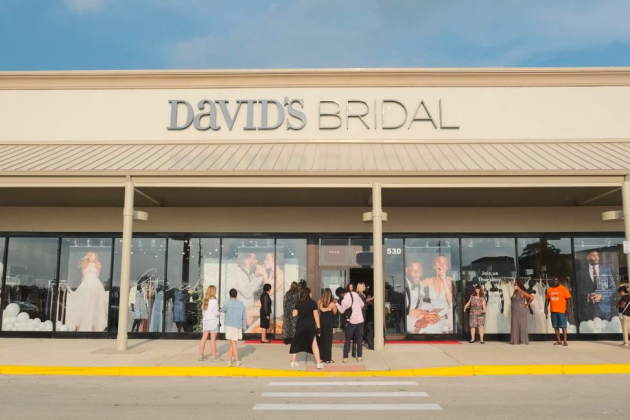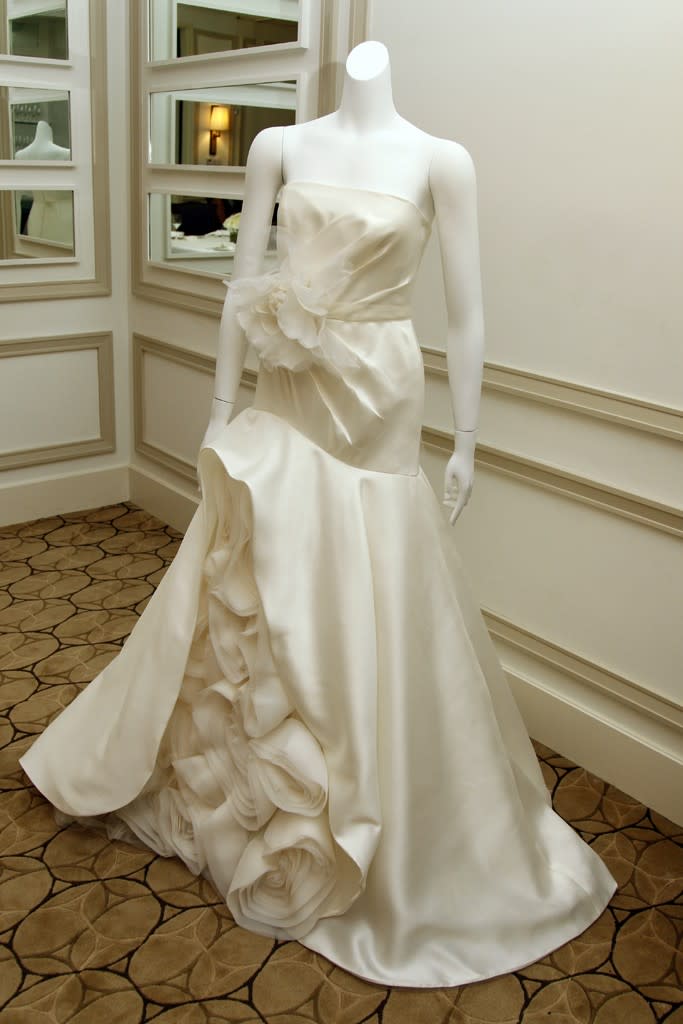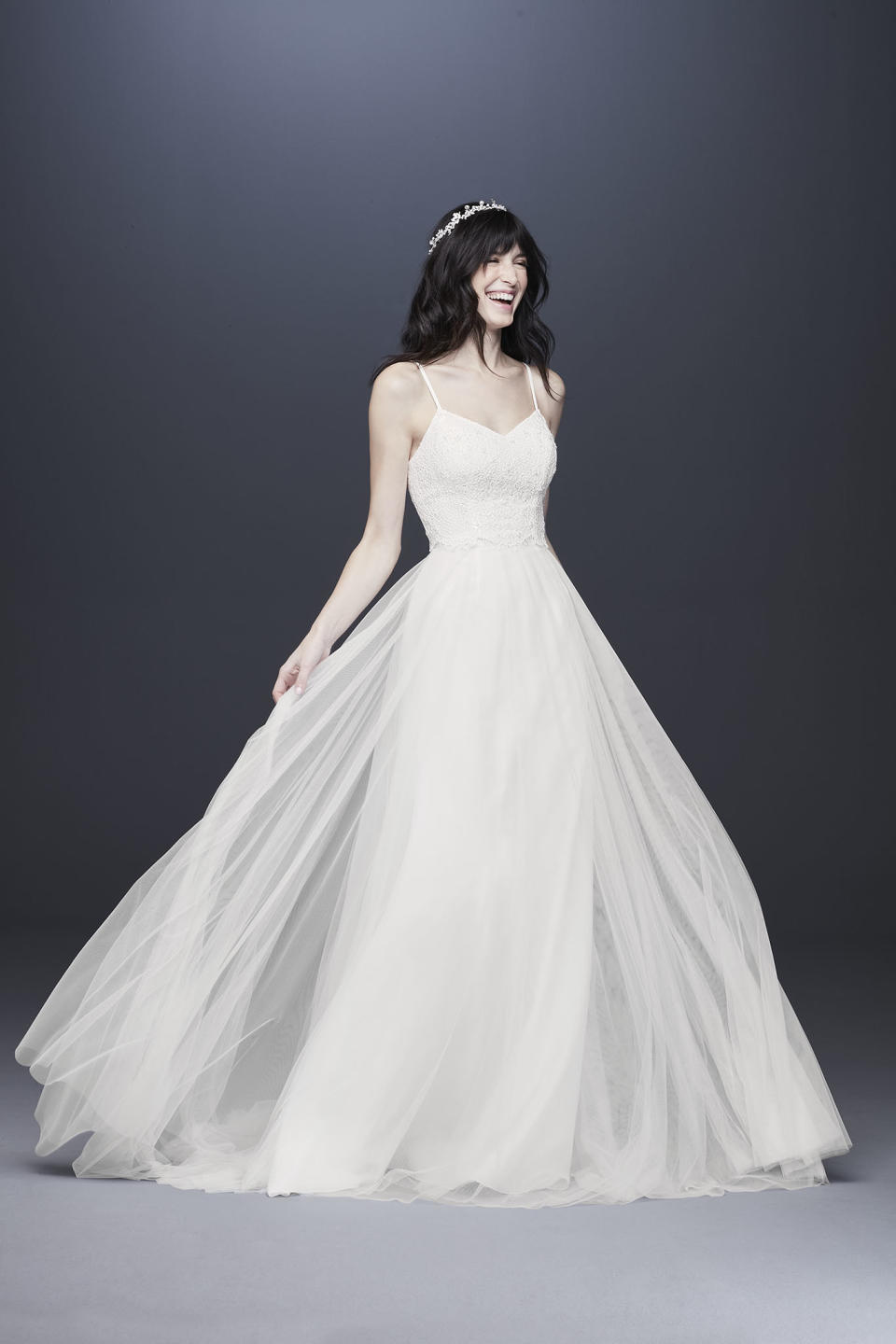David’s Bridal Files for Bankruptcy

It’s official.
After 10 days of speculation that David’s Bridal LLC, the only sizable U.S. bridal retail chain, was nearing bankruptcy, the company has done so in the U.S. Bankruptcy Court for the District of New Jersey. The 70-year-old business expects to file a recognition proceeding in Canada, as well, and one of its subsidiaries is planning to start administration proceedings for its business in the U.K.
More from WWD
This marks the second time in five years that the company has filed for Chapter 11 bankruptcy.
With 300 stores — mostly in the U.S. — the news may concern thousands of brides, bridesmaids and prom-goers with existing orders or plans for David’s Bridal purchases. The company said its stores will remain open, and it “intends to continue operating in the ordinary course, including by fulfilling all customer orders without disruption or delay.”
However, staffing and customer service — a key ingredient in the bridal market — could be an issue. On Friday, David’s Bridal announced that it is laying off 9,236 employees, the bulk of its workforce, in the next few months. This is happening at a time, when the retail sector is awash with job opportunities, including entry-level ones with signing incentives.
The Conshohocken, Pennsylvania-based company would not disclose how many total employees it has. David’s Bridal is said to be informing store employees of the various potential outcomes to help them. Job cuts at David’s Bridal corporate office were made last week, according to one in-the-know industry source. Laura McKeever, the spokesperson for David’s, declined to comment on the number of corporate jobs eliminated and how many stores the company might close in the next few months.
Another industry source, who requested anonymity, said Monday, “It’s salvageable in a smaller format with fewer stores. For customers on a budget, David’s was an answer. Even when they did the [pricier White by] Vera Wang label license, it worked for a while,” the source said. “The stores were just too big and too impersonal. Bridal programs are [usually] very personalized. Shoppers meet with the same bridal consultant every time they come into [their store of choice,] who make you feel special.”

Part of the company’s downfall was due to its costly rental leases and the abundance of low-ticketed dresses that offered no or minimal margins. The retailer also has struggled to unload its larger-format stores, a source said.
There were said to have been discussions with Hudson’s Bay executive chairman Richard Baker, and also with Sycamore Partners, but neither resulted in a deal, according to an industry source, who noted that Baker understands the bridal market and its stickiness in terms of the people and multiple product purchases. Looking into possible acquisitions is routine procedure for Hudson’s Bay.
Representatives from Hudson’s Bay and Sycamore Partners did not acknowledge media requests Monday.
Despite the fact that major bridal retailers are scarce, save for the more upscale Pronovias, there doesn’t seem to be another bridal retailer stepping in as the white knight to rescue David’s Bridal, a source said. “It’s going to have to be a retailer or a vertical producer,” they speculated.
McKeever said Monday, “We continue to believe that there is value in our brands and potential purchasers remain interested in our business and in exploring transactions. Simultaneously with our Chapter 11 filing, we filed a motion proposing an efficient, public and flexible auction process to continue our sale efforts. The company will continue to conduct a sale process as we commence our Chapter 11 cases.”
The retailer, which has Oaktree Capital Management as a leading shareholder, has seen its market share shrink. Representatives at Oaktree Capital Managment did not acknowledge a media request Monday.
Under the leadership of former president and chief executive officer Robert Huth, David’s Bridal had 319 stores and sales exceeding $760 million. In the fall of 2012, David’s Bridal was purchased by the private equity firm Clayton, Dubilier & Rice for $1.05 billion. At that time, the retail chain had about a 36 percent share of the bridal market compared to its estimated 18 percent today, one industry source said. Currently, the company’s focus is sharper-priced dresses, but there are also more expensive items like gowns from Oleg Cassini and Galina.
Huth declined comment through a spokesperson Monday.
David’s Bridal is reportedly working with the investment bank Houlihan Lokey. Vice president of communications John Gallagher declined comment Monday.

The retailer’s online platforms, including its Pearl platform and vendor marketplace, will remain up-and-running for brides working on their wedding planning. Further, members of Diamond, the company’s industry-leading loyalty program, can continue to derive value by earning and redeeming rewards, and the company intends to continue honoring gift cards, returns and exchanges at this time. To uphold its commitments to customers, employees and partners, the company is seeking customary “first day” relief from the court, including authorization to continue payment of employee wages and benefits, maintain certain customer programs, and honor obligations to critical vendors.
In a WARN notice filed in its home state of Pennsylvania, David’s Bridal highlighted a three-phase plan with the first round of layoffs starting Monday. The second round will run from May 13 through May 27, and the third phase is planned to get underway on June 12 and run through Aug. 11. In Pennsylvania, 15 stores will be impacted.
Several bridal and industry observers noted how the category has been one of the fastest to rebound from the pandemic, but changing lifestyle preferences continue to plague some brands that have failed to adjust accordingly. In 2026, bridalwear is expected to reach $69.9 billion in volume, compared to $55.5 billion in 2020, according to the Global Bridal Wear Industry Report.
Prior to Monday’s filing, David’s Bridal initiated an evaluation of potential strategic alternatives, including a marketing and sale process for its assets. The company said that due to its liquidity constraints, it was unable to finalize its marketing and sale process out of court, but it will continue to explore a sale during the bankruptcy process. David’s Bridal said it has been strategically managing inventory and evaluating its store count “to maximize value and the prospect of a successful going concern transaction.”
James Marcum, CEO of David’s Bridal, said, “Over the last several years, we have taken meaningful strides in our transformation to fulfill the needs of the brides of today and tomorrow. We have successfully modernized our marketing and customer interaction processes and driven our retail service levels to best in class. Nonetheless, our business continues to be challenged by the post-COVID-19 environment and uncertain economic conditions, leading us to take this step to identify a buyer who can continue to operate our business going forward. We are determined to stay focused on our future, because we believe we have an important role in ensuring that every bride, no matter her budget, can have her perfect dress.
“We are grateful to the seven decades of brides and customers who have trusted us with the most special events of their lives, as well as to the dedicated associates and valued partners who make our customers’ dreams come true. We remain as committed as ever to providing excellent service, delivering for our brides and customers, and being part of magical moments.”
David’s Bridal’s first bout with bankruptcy came in the fall of 2018, when the retailer reached a deal with lenders to reduce its debt by more than $400 million. In April 2021, the bridal company closed a $70 million loan provided by CPPIB Credit Investments, a subsidiary of the Canada Pension Plan. That loan matures next year and is being used to fund operations and for corporate purposes.
After David’s Bridal emerged in 2019, from its first bankruptcy filing, Clayton, Dubilier & Rice no longer had an ownership stake in the budget-conscious retail chain, according to one industry source Monday.
Mark Ingram, a 27-year bridal industry veteran who has spent much of that time in retail, said he was “saddened” by the Chapter 11 filing. “Although I have virtually no crossover with David’s in terms of product or customers, this kind of news does shake the entire industry and the confidence of the bride. There is always the concern of ‘Will I have my gown in time for my wedding?’ [in general] and that unfortunately may trickle up.”
Ingram, CEO of Mark Ingram Atelier, said he was “certain” that there is a good deal of top-notch bridal talent within the organization. “Should David’s not come out on top, with so many seasoned bridal merchants, management and sales executives, I am quite certain they will be scooped up by the retail marketplace, which seems to be experiencing labor shortages in this post-COVID-19 period,” Ingram said.
Best of WWD

